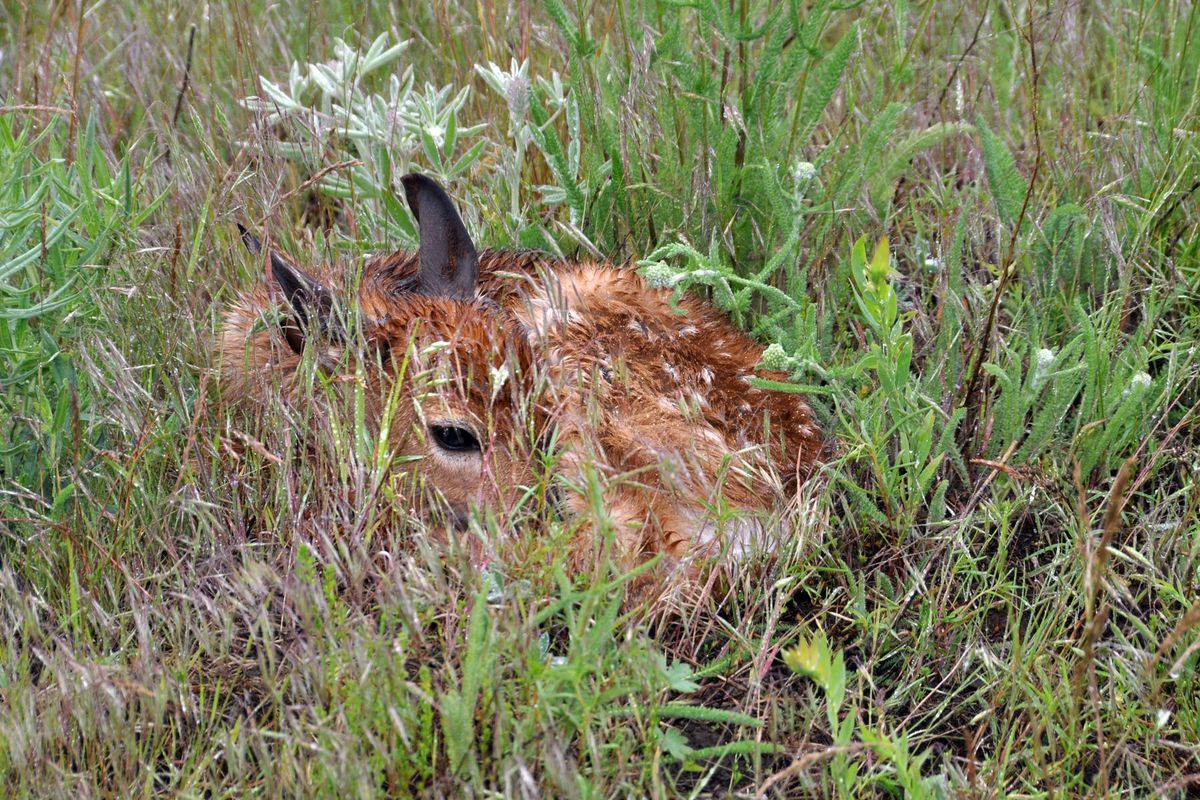‘Fawn-napping’ a common, but tragic, reality

They’re cute, they’re alone and you should not pick them up.
The fawns are out. And as happens every year, people are snatching them with delusions of helping the small creatures.
“They are super cute, so I get it. But the best thing to do is leave it alone,” Washington Department of Fish and Wildlife police officer JoLynn Beauchene said. “If you happen upon them, they aren’t abandoned. And if they’re crying out, they could be calling for their mom. And that’s natural.”
Every year, Beauchene said WDFW has to deal with would-be animal saviors picking up fawns. She calls this “fawn-napping.”
While the impulse may be pure, the outcome is usually messy.
When fawns are born, they aren’t mobile. Does sometimes leave their babies for as many as nine hours between feedings to avoid tipping off predators. The babies’ natural course of defense is to lie “flat in the grass” until their mother comes back.
For an anthropomorphizing-inclined human, the fawns look an awful lot like abandoned babies.
They’re not.
In fact, by hanging around a fawn the good-intentioned humans are making it more likely that the doe will abandon her baby.
“When people are hanging around, the doe is not going to want to come back,” Beauchene said.
With many fawns emerging from the woods in the last two weeks, Beauchene said she’s already received several calls.
“Most of the time, the best thing to do is leave it alone give it some space,” she said. “Don’t try and feed it. Don’t try to touch it.”
Beauchene remembers one case in which a family took a fawn home and put it in a dog bed. When Beauchene arrived, there were half a dozen people in the house and the family’s youngest child was lying next to the animal.
Beauchene took the fawn. But because she didn’t know where it came from, and by extension where its mother was, she didn’t have much hope for the animal’s future.
“That little fawn pretty much had no chance,” she said.
Of course, there are cases in which it’s appropriate to move a fawn. But those cases are far and few between. One example, Beauchene said, is if you see a fawn lying in the road. Please do move the animal out of the road and call WDFW, she said. If you do move a fawn, wear gloves. Deer rely heavily on scent to navigate and human scents can confuse them.
And if an animal is visibly injured, people can call WDFW, Beuachene said.
The impulse to help wild animals is not limited to deer. People pick up other baby animals – including elk, moose and raptors. But fawns are the most commonly snatched.
The impulse to ascribe human emotions and attributes to animals is nearly universal and may have played a key role in humans’ evolutionary success as social beings. Researchers have documented a link between higher levels of empathy and anthropomorphizing animals.
Ascribing humanlike characteristics to nonhuman entities can prompt conservation and environmental stewardship.
But when it’s taken too far, it can lead to tragedy. Beauchene reiterates that wild animals are just that. Wild.
“This isn’t a phenomenon just here in Washington state. This is a worldwide phenomenon,” she said. “We don’t want people to love wildlife to death. Their intentions are good, but they end up doing way more harm than good.”